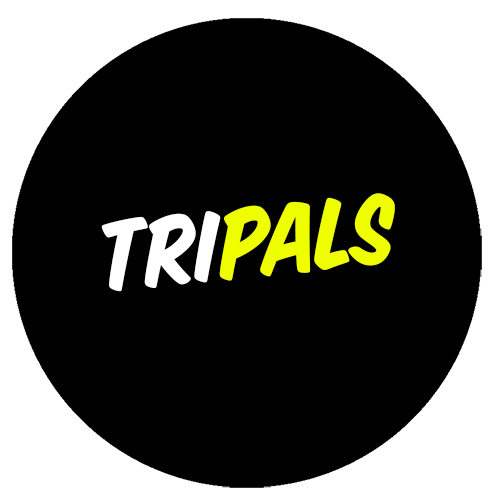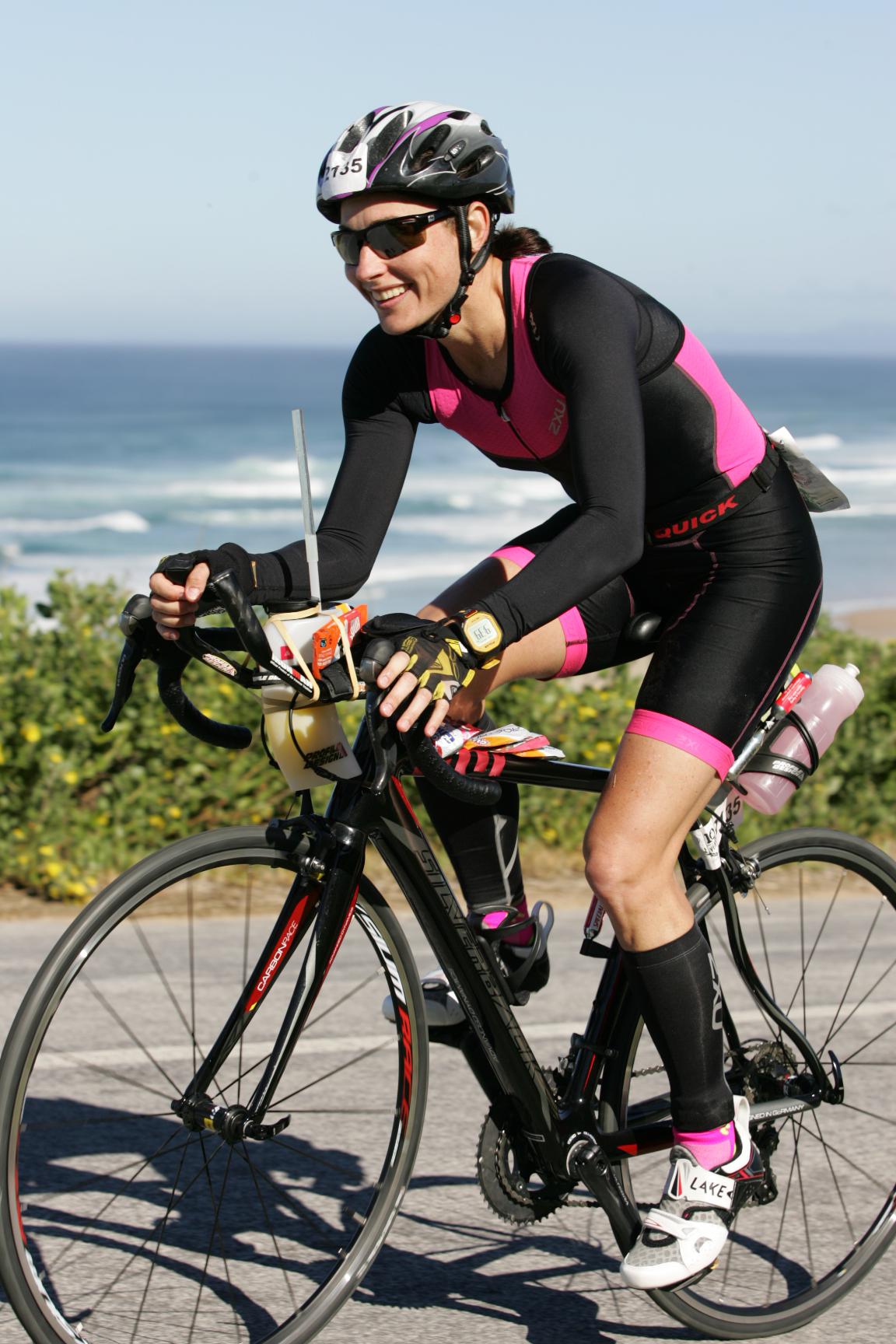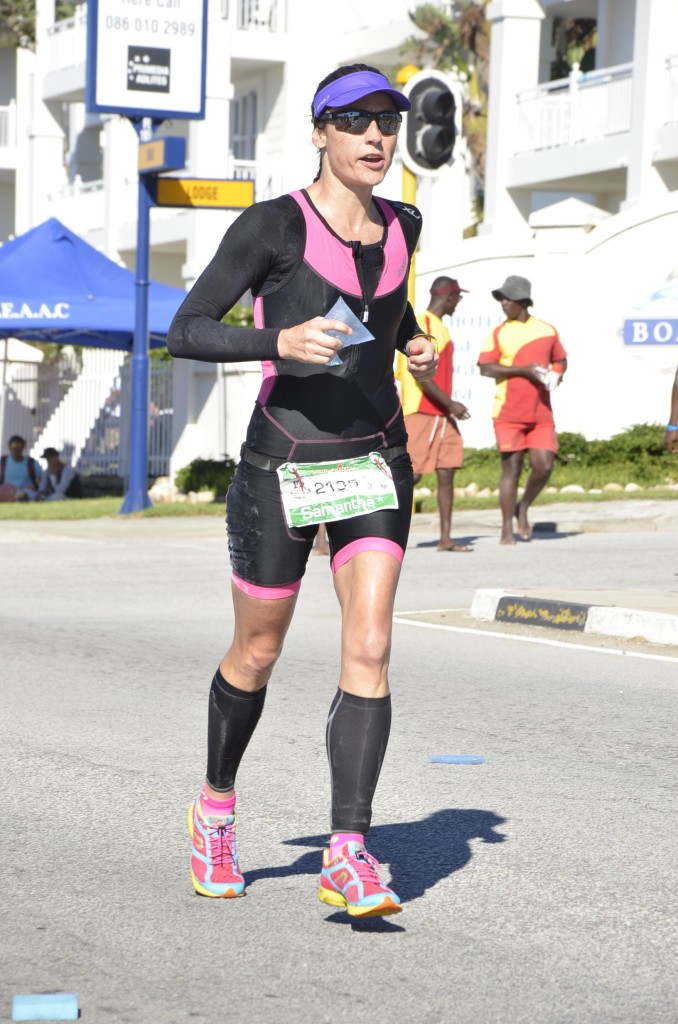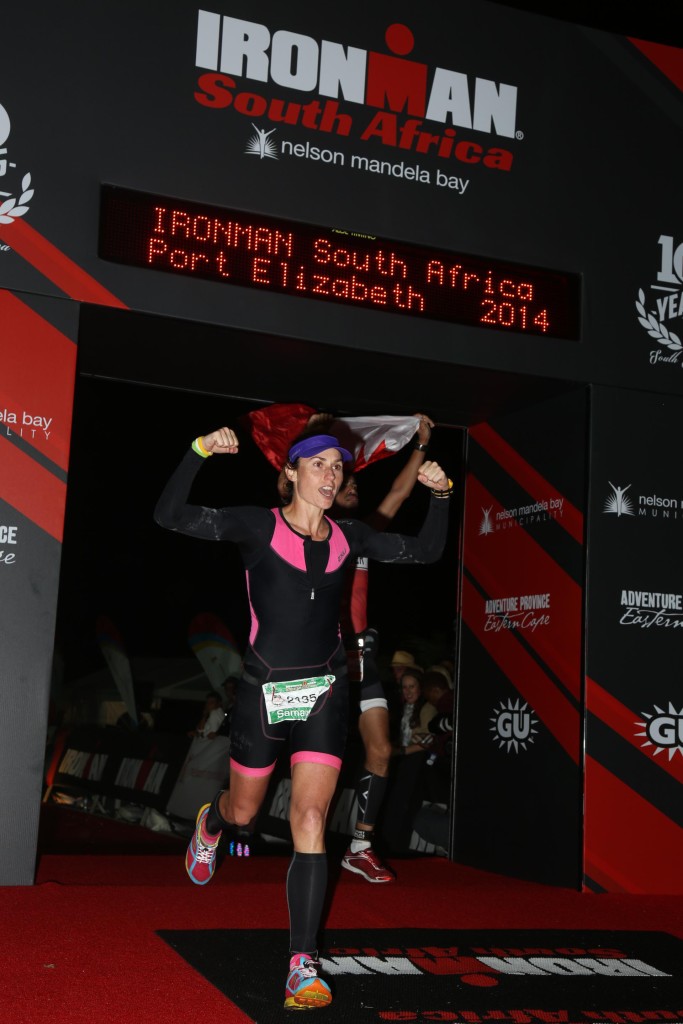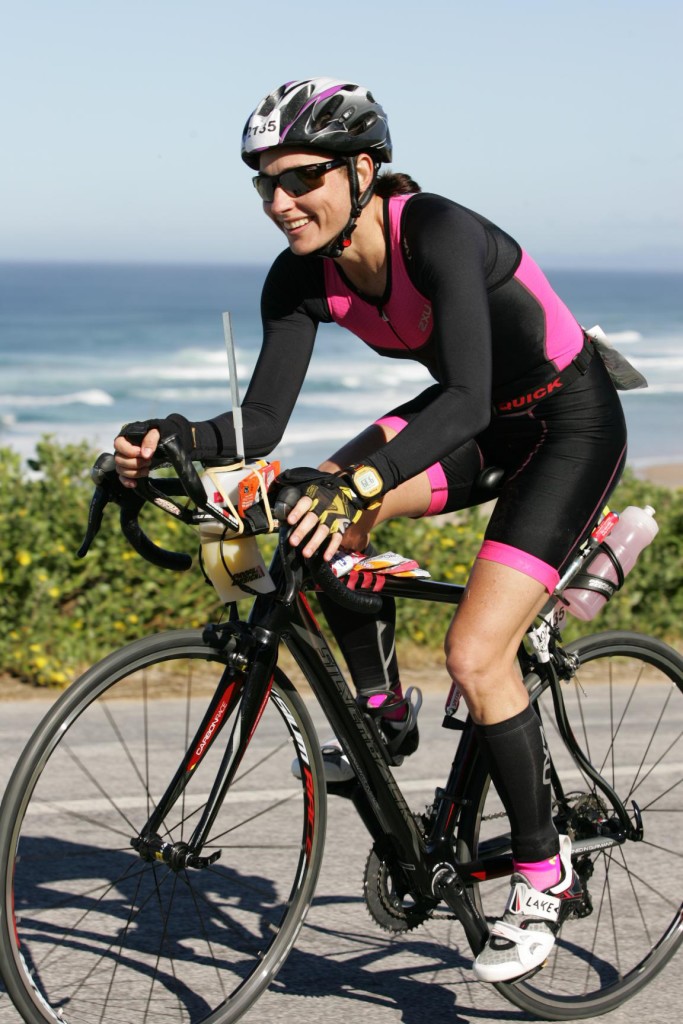In our thirst for knowledge and trying to see how others do it, we caught up with experienced triathlete Samantha Cadwallader to see how she does it.
Can you give us a bit of info about you and what you do?
I’m passionate about sports and the outdoors. I landed my dream job with a Dubai sports distribution company about two and a half years ago as Newton Running Brand Manager. Launching a technical shoe in a brand-conscious market proved challenging, but not impossible and today we have Newton in over 10 doors in 3 GCC countries. More recently, I was promoted to Marketing Manager, overseeing Newton, Nathan, 2XU and Polar – all world-class, performance-based brands and popular in the triathlon scene.
What distance events do you do? Sprint/Olympic/ironman/duathlons?
I’ve done all of the above, but I tend to favour the longer distances over the short sprint stuff.
What’s your favourite and why
For triathlon I prefer the half ironman/70.3 distance. It’s challenging enough to race and you don’t have to kill yourself with crazy training. You can still manage a good social life while training and finding a balance between the two is most important to me. It can be tough, but there must always be an element of fun in there for me to enjoy it. I’m no masochist.
Haha, I think we can all resonate with that! How did you get into triathlons?
Honestly, I was bored of just running and the repetitiveness of it all, so the idea of doing three disciplines and cross training was very appealing. The latter makes you stronger and less injury prone. It was also around the time that it was taking off here in Dubai. Plus, I had some mad friends training for an Ironman in China and I had always wanted to go there. Combining both my passions, sport and travel, seemed like a ‘no brainer’. It also helped that I’m quite a handy swimmer – most people hate the swim – and did some BMX when I was younger, so it didn’t seem too foreign.
What do you love most about them?
You learn so much about yourself; from strengths and weaknesses to your true character and personality traits, especially when doing the endurance races. There is no place to hide! Equally important is the confidence you gain from completing these sorts of challenges and the sense of personal satisfaction. I find that these races help focus you in life, keeping you fit and healthy as well as positively shape the way you approach life in general, usually with determination and a willingness to never give up.
What do you find your biggest challenge in training for a tri?
Fitting in all the training hours, keeping it fun and looking for hills. Dubai is flat, so it usually involves a 3:30am departure to hit the mountainous areas for bike training and avoiding the summer heat!
And what about the tri itself? Biggest challenge? How do you overcome it?
Probably the 2 Ironman events; Jeju in 2011 and SA in 2014. The latter was the most challenging, with a severe headwind for the last 60km on the bike. I literally watch my sub 12-hour goal blow away in the wind. But, I had a good cry and pulled myself together to smash out a sub 4-hour run and finished strong, missing a Kona slot by just two places and finishing 4th in my age group.
Actually, more recently, the off-road Olympic distance triathlon I did this year was a lot tougher than I imagined. That put me in my place too!
Any technology you use to monitor your progress?
The Polar M400 is my watch of choice for cycling and running. I’m not very tech savvy and figures just don’t do it for me, so I try and go with how my body feels. My ‘tech’ is in my Newton Running shoes and 2XU athletic apparel. Both companies are ground-breaking in their innovations and produce products that enhance your training and race experiences, elevating your performance levels.
For a lot of people, the swim is the most challenging aspect of a tri and you say it’s not too much of a worry for you. A lot of tris are also lake based, so much more controlled than the sea, like the Brighton one we are doing, what tips would you give to help people overcome their fear of the sea?
Sight regularly to make sure you’re swimming in a straight line. If it’s choppy, ride the swell and breathe to the side opposite to the oncoming chop/wave so as not to swallow water. High elbows also help with managing cutting through rough sea swells. And mostly importantly, relax. Wetsuits are fab for people who don’t have great technique too as they add buoyancy.
On average, how often do you train 6 months out and 3 months out from an event? Is it any different?
It all depends on the distance and how much base training I have done over the summer months. If my base training is good then 4-5 for a full Ironman and 2-3 for a half/70.3.
What about kit…what is your go to piece of equipment for a tri (type of shoe/clothing/bike enhancement etc.)
Shoes – Newton Running Gravity, 3mm drop – perfect for high mileage but also light enough to race in, with technology in the mid foot and heel it gives you that extra ‘pep’ in your step when your form is fading fast.
Bike – Tribars as I don’t have a TT bike and clip-ons for sure. People from Brighton, leave the basket at home!
Clothing – I always use 2XU technical apparel for training and racing, especially the compression tights for recovery. They are the best investment.
Nutrition – Vitally important: GU energy gels on the run and MuleBars on the bike. Aqualyte for my electrolyte drink replenishment.
Women in tri. From personal observation, it seems like more and more woman are starting to get involved with triathlons. What advice would you give to those just starting out?
Recruit a friend and go for it…. It’s great fun and training together is an awesome experience, plus motivating. Start with the shorter distances and build it up slowly. Get a feel for what you enjoy, then set your goals. Commitment is king when it comes to training for the longer stuff and remember, recovery is part of training. I always have two full days off during the week to rest.
We are nearly in 2016. Two questions… What events are you most looking forward to next year?
The Dubai and Boston Marathons.
Any trends in kit or training you see happening more in 2016?
Wearable tech is one to watch out for in the future. More people are seeing the value in using compression and training smarter as opposed to longer and harder. Thankfully, as so often I see people over train and blow their races, which is a real shame after everything they’ve put in. Nutrition is also a game changer and the diets are becoming more and more scientific. See what works for you though as everyone is different.
Thanks Sam, really insightful! Good luck on your training and events next year and one day, hopefully we can do one together!!
Sam is Markeitng Manager for 2XU, Polar, Newton Running & Nathan Sports
